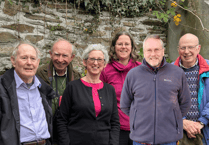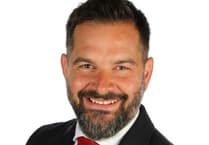Speaking on Politics South West on 12 June, Plymouth City Council Leader Tudor Evans said: “We drive growth. And we must exist. But these proposals threaten our existence unless we can take in extra population to Plymouth.”
A few days earlier, on 9 January, Torbay Council Leader David Thomas echoed his words, telling colleagues: “There will be no more small unitaries. So we will be required to have a larger-sized Torbay unitary, whatever that may look like.”
Both were responding to the government’s English Devolution White Paper, published on 16 December. The paper makes it clear that councils must have a population of 500,000 or more to retain unitary status and avoid being absorbed into larger authorities.
With Plymouth at just under 265,000 residents and Torbay at 145,000, both councils fall short. The solution, said Patrick Nicholson, leader of the Independents on Plymouth City Council, “has to be a boundary extension of some description.”
“How can it be right that most of Sherford is in the South Hams?” he asked. “If you were to survey those people, the majority are coming from Plymouth. They depend on Plymouth. They shop in Plymstock, Plympton and Plymouth. So it makes no sense moving forward for local government to centre on the current boundary.”
Plymouth already operates a joint local plan with surrounding areas, and Nicholson believes this should be reflected in the city’s boundaries. Beyond parts of the South Hams, much of West Devon could also be absorbed.
Similarly, Councillor Thomas sees an expanded Torbay including “travel-to-work routes, growth areas, housing, accommodation, access to healthcare, etc.” His Independent Group colleague, Darren Cowell, suggests using the South Devon Healthcare Primary Trust boundaries as a guide.
That could mean Torbay absorbing parts of Teignbridge and much of the South Hams, including Totnes, Dartmouth, Brixham, Ashburton, Dawlish, Teignmouth and Newton Abbot. Councillor Thomas even speculated on rebranding the area as “South Devon” rather than Torbay.
If Plymouth also extended its reach to match University Hospitals Plymouth NHS Trust’s coverage, it could take in Tavistock, parts of Cornwall, and towns like Ivybridge, South Brent and Kingsbridge.
Should both councils succeed, the South Hams as we know it would cease to exist.
Councillor Evans argues that Plymouth must fight to protect its own existence, but seems unconcerned about whether South Hams residents wish to be absorbed into a more urban authority.
Likewise, Councillor Lewis appears dismissive of local concerns, boasting: “Wouldn’t it be great if Torbay could teach the rest of Devon how they should be doing it?”
To meet Torbay’s housing targets of 940 new homes a year, he sees expanding into the South Hams as the solution. Councillor Evans shares this view, pointing to Plymouth’s “tight boundary” and “empty fields” beyond it, apparently ignoring that the South Hams must also find land for 900 homes annually.
The government has decided that South Hams District Council will be abolished. We will be absorbed into one or more larger neighbours, whether we like it or not. A consultation is promised, but history suggests objections will be ignored.
Instead of local representatives making decisions for our area, power will shift to Plymouth and Torbay. Decisions on housing, infrastructure and services will be driven by the needs of urban centres, not the South Hams.
Devolution is meant to transfer power to local communities. Yet this forced reorganisation does the opposite. Trying to make such profound and consequential changes in such haste will almost certainly end up proving an expensive and unmitigated disaster.




